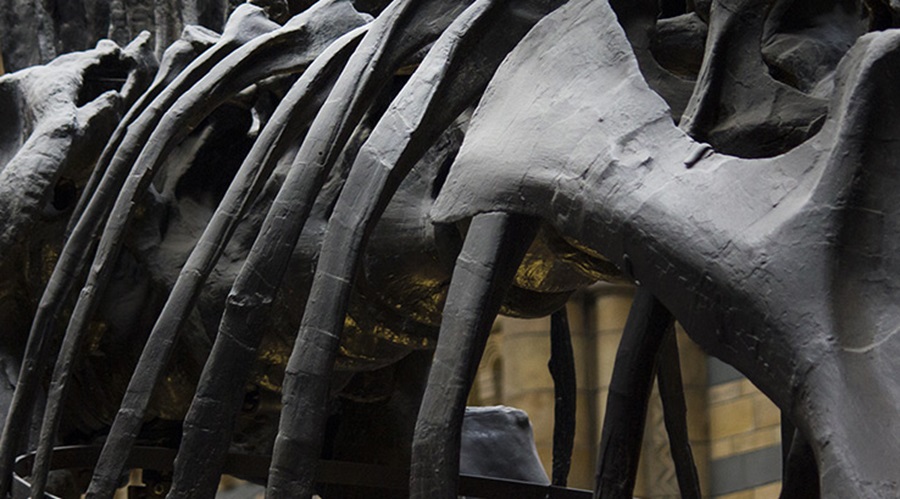By Parkdean Resorts on 23/12/2016
Dinosaurs first set foot on the planet nearly 230 million years ago, at a time when the world was one big supercontinent, called Pangaea. The continents started to break up in the late Jurassic period, before gradually splitting into the seven that exist today.
Studies by palaeontologists and fossil findings have led to a strong belief that over 100 different species of dinosaur once roamed the area which is now Great Britain. These included the stegosaurus, ankylosaurs, ornithopods, and gigantic sauropods, one of which may be the largest dinosaur found in Europe.
Most of the dinosaur remains in the UK have been discovered from rocks dating back to the Middle Jurassic and Cretaceous periods. Here at Parkdean Resorts, we’ve taken a look at just some of the different types of dinosaurs that used to roam around Britain’s glorious coastline.

North Yorkshire
North Yorkshire’s coastline is often referred to as the Dinosaur Coast, where the cliffs and bays are made up of rocks from the Jurassic period. This has made it immensely popular with geologists and historians, and many secrets of the Earth’s history have been discovered in this area, including dinosaur fossils.
In 2015, Britain’s oldest sauropod dinosaur was identified from a fossil bone discovered near Whitby, only a short distance from Cayton Bay Holiday Park. The fossilised backbone fell from a cliff face onto the beach, and the University of Manchester ran tests which suggested it was around 176 million years old - dating back to the Middle Jurassic period.
Sauropods, commonly known as brontosaurus, had long necks and tails, with large bodies and small heads. This species included some of the largest plant eating dinosaurs that ever walked on the planet, with some growing up to 115-foot-long and weighing as much as 90 tonnes.
This fossil was a spectacular find, as Middle Jurassic rocks are typically only exposed in certain areas, such as China and Argentina. It was affectionately nicknamed Alan after the person who found it, and is now held in the Yorkshire Museum in York if you’d like to see it for yourself.
Dorset
The Jurassic Coast is a UNESCO World Heritage Site that spans a 95-mile stretch of coastline between Exmouth in East Devon to Studland Bay in Dorset. Its layers of sedimentary rock date back 185 million years, giving an almost complete record of the Triassic, Jurassic and Cretaceous periods. It’s therefore not surprising that the area is closely associated with dinosaurs, and is immensely popular with fossil hunters.
The cliffs around Lyme Regis in Dorset are particularly famous for being one of the only places in the world where Scelidosaurus remains have been identified. Just over 20 minutes from West Bay Holiday Park, there have been at least eight discoveries of the species in the short stretch of coastline between Lyme Regis and Charmouth.
One of the most remarkable findings of a Scelidosaurus was back in 2000, when local fossil collector David Sole discovered the most complete dinosaur skeleton ever to be found in England. Since then, several more fragments that belonged to the same specimen have been recovered along the same stretch of the Jurassic Coastline.
The Scelidosaurus is one of the earliest armoured dinosaurs, and is an ancestor of ankylosaurs and stegosaurs. The one found had heavy spines all over its body and goat like horns forming a ruff with its neck armour, leading experts to believe it was a mature male. If you want to see what the dinosaur looked like, there’s a full-scale cast on display at the Charmouth Heritage Centre.
Wales
Although Wales might not be associated with dinosaurs as much Yorkshire and Dorset, there was recently an extremely exciting discovery at Lavernock Point on the south coast.
Less than an hour away from Trecco Bay Holiday Park, a dinosaur’s remains were discovered in 2014 by fossil hunting brothers, Nick and Rob Hanigan. It took palaeontologists two years to fully analyse the fossil, when it was confirmed that the dinosaur was a new Jurassic species from the Therapod group that dated back 201 million years. The dog sized predator was named Dracoraptor Hanigani, meaning “dragon robber”, which reflects the national symbol of Wales and the finders’ surname.
Since the initial discovery, part of the dinosaur’s foot, claw, and vertebrae from its tail have also been found. It’s thought that it was only a young dinosaur, as the bones weren’t fully formed. The skeleton is now displayed in the National Museum Wales in Cardiff.
Do you have any stories about dinosaur discoveries? We’d love to hear about them on our Twitter page.

